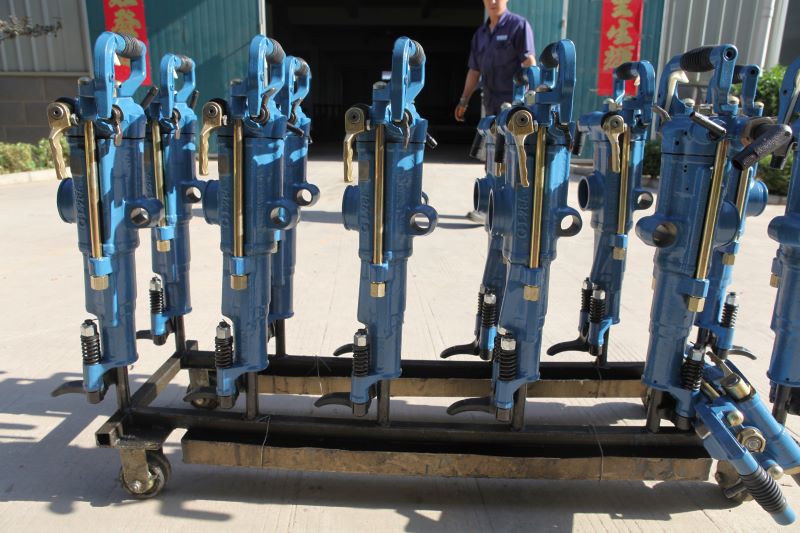Pneumatic rock drill machines, also known as air hammers or jackhammers, are indispensable tools in the mining, construction, and demolition industries. These robust machines are designed to bore holes in hard rock and concrete surfaces by utilizing compressed air to power a hammer mechanism. This article will explore the workings, applications, and maintenance of pneumatic rock drill machines.

How Pneumatic Rock Drill Machines Work
Pneumatic rock drills operate based on a simple yet powerful principle. Compressed air is supplied to the drill through a hose, which then drives a piston within the machine. The piston's rapid back-and-forth motion generates a high-impact force, which is transferred to the drill bit at the end of the machine. This force, combined with the drill bit's rotational movement, enables the machine to penetrate hard materials like rock and concrete.
Key Features
1. Power Source: Operated by compressed air, making them suitable for environments where electric power might be hazardous or unavailable.
2. Mobility: Generally lightweight and portable, facilitating easy transport and maneuverability in confined spaces.
3. Durability: Built to withstand harsh working conditions with robust materials and construction.
4. Speed and Efficiency: Capable of delivering high-impact force and frequency, leading to faster drilling and increased productivity.
5. Control and Precision: Equipped with various controls to manage speed, pressure, and direction, allowing for precise drilling operations.
Types of Pneumatic Rock Drills
1. Handheld Rock Drills: Compact and versatile, suitable for small to medium-scale projects and confined spaces.
2. Jackhammers: Heavier and more powerful, used for breaking up larger rock formations or concrete structures.
3. Pneumatic Drifters: Mounted on drill rigs, ideal for horizontal and inclined drilling in mining and tunneling.
4. Pneumatic Stoppers: Smaller, designed for secondary breaking tasks and scaling in mining operations.
Applications of Pneumatic Rock Drill Machines
1. Mining and Quarrying: Pneumatic rock drills are essential in the mining industry for blasting holes in rock faces to facilitate the extraction of minerals. In quarries, they are used to break down large rocks into smaller, more manageable pieces.
2. Construction: These machines are crucial for preparing construction sites, particularly for the installation of foundations, setting anchors, and creating holes for bolts.
3. Demolition: Pneumatic rock drills can be used to break down concrete structures and pavements during demolition projects.
4. Tunneling and Excavation: In tunneling projects, these drills are used to create pilot holes and to break through rock barriers.
Pneumatic rock drill machines are indispensable in industries that require the ability to drill through hard materials. Understanding their operation, applications, and maintenance can help maximize their effectiveness and longevity. By adhering to proper maintenance practices and using them in appropriate applications, these powerful tools can be a valuable asset to any construction, mining, or demolition project.





